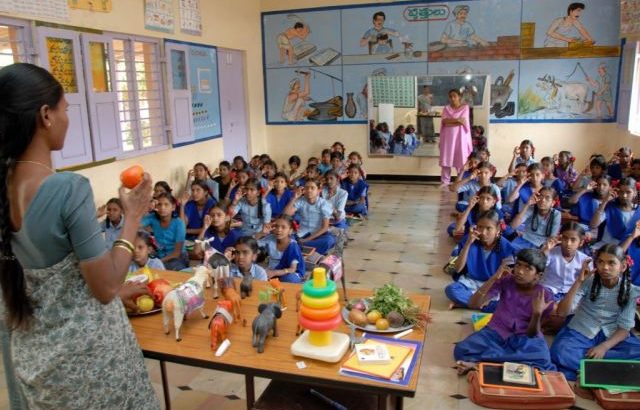Asia/India/02 de Septiembre de 2016/Autor: Shaun Vaz/Fuente: The Indian Express
RESUMEN: Las escuelas en Mumbai que ofrecen programas de estudios internacionales han visto un aumento en el número, al igual que los estudiantes que optan por los programas de estudio nacional sobre el Consejo Central de Educación Secundaria (CBSE), Certificado de la India para la Educación Secundaria (ICSE) o certificaciones Clase XII de la junta estatal. A partir de junio de 2015, había 41 Bachillerato Internacional (IB) y 96 Exámenes Internacionales de Cambridge (CIE) escuelas en el estado afiliadas, y el Gobierno ha dado el visto bueno a la instalación de 1.018 escuelas más internacionales. De dichas escuelas, 18 estarán en Mumbai, y 50 en Thane. Esto apunta a la creciente demanda de los estudiantes para el programa de estudios orientado a la internacional. Una de las razones para el cambio puede ser debido al crecimiento en el número de los estudiantes de educación superior y carreras fuera del país. Dr. Ranjini Krishnan, director del Billabong High School, Thane, dijo: «» Ha habido un aumento, si no marcada, en el número de estudiantes que optan por planes de estudios internacionales. Hay un aumento en la aspiración entre los estudiantes y los padres, que son de la idea de una educación en el plan de estudios internacional hará que sea más fácil para ir al extranjero para estudiar o encontrar puestos de trabajo «»
Schools in Mumbai offering international syllabi have seen an increase in number, as have students opting for the curricula over the national Central Board of Secondary Education (CBSE), Indian Certificate for Secondary Education (ICSE) or the state board’s Class XII certifications.
As of June 2015, there were 41 International Baccalaureate (IB) and 96 Cambridge International Examinations (CIE) affiliated schools in the state, and the government has given a go-ahead for setting up of 1,018 more international schools.
Of these proposed schools, 18 will be in Mumbai, and 50 in Thane. This points to students’ growing demand for international-oriented curriculum. One of the reasons for the shift may be because of the growth in the number of the students pursuing higher education and careers outside the country.
Dr Ranjini Krishnan, Principal of Billabong High School, Thane, said,””There has been an increase, if not marked, in the number of students opting for international curriculum. There is an increase in aspiration among students and parents, who are of the notion than an education in the international curriculum will make it easier to go abroad to study or find jobs””
The Cambridge Board consists of the International General Certificate of Secondary Education (IGCSE), which is equivalent to the 10th standard exams, and goes on further to the As and A Levels, which are equivalent to 12th standard examinations.
Parents are eager to enroll their wards early on, even in relatively new international schools such as the Don Bosco International School — the first international school under the Don Bosco banner. Currently in their third year, the school strength has gone up from 100 students in their first year to 378 presently.
“We see a large number of applicants in our junior classes, about 400 to 500 applications for 48 seats in a particular grade. There certainly is a demand for international level education, and it is only going to grow,” said an official of the school.
The small size of classrooms — coupled with the activity and practical-oriented structure of the curriculum – is also seen as a drawing factor for applicants.
Father Gilbert d Lima, Manager of St Anne’s International School, Malad, said, “The IGCSE curriculum has a holistic approach to education, oriented towards life, and not just book. Inclusive of subjects like robotics, or
the teaching of an instrument from the first grade, it forms a connect between academics and the overall formation of the child.” St. Anne’s, which was granted permission to begin an international curriculum last year, currently has classes till the third grade, with an additional grade introduced every year.
Lissy Mathew, who works in the administration department of Nahar International School, Andheri, said, “Parents who can afford the comparatively higher fees usually choose international schools. They want the best for their children, and they opt for the international curricula.”
Most international schools have smaller classrooms, which allows high teacher-student interaction than in other boards, which usually have crowded classrooms.
There is also a marked difference in the approach and personality of students of international boards and others, said Lima.
“The children of our international school seem more curious to know about things, and express themselves much better, as compared to our state board students. This might be associated to the type of learning, with the IGCSE board being more activity-based, and the state board being rote-learning base”.
“Another major factor is the fewer number of students in the class. Our state board classrooms are much larger compared to our international school classrooms,” he said.
Amay Keval Shah, who just graduated from the Jamnabai Narsee International School earlier this year, said, “I had a choice between ICSE and IGCSE. I opted for the IGCSE because it offers a learning method based on experiments, as opposed to the ICSE, which follows a more rote method. The IGCSE programme offers students a world view, and it appealed to my style of learning.” Amay is currently in the IB programme at Dhirubai Ambani International School, and plans to study in the US after 12th grade.
Fuente: http://indianexpress.com/article/education/mumbai-students-opt-more-for-international-curricula-than-indian-3006899/
Fuente de la imagen: http://www.que.es/ultimas-noticias/sociedad/fotos/6575/20091215/53629-trabajo-educativo-fundacion-vicente-ferrer.html






 Users Today : 36
Users Today : 36 Total Users : 35459942
Total Users : 35459942 Views Today : 42
Views Today : 42 Total views : 3418507
Total views : 3418507